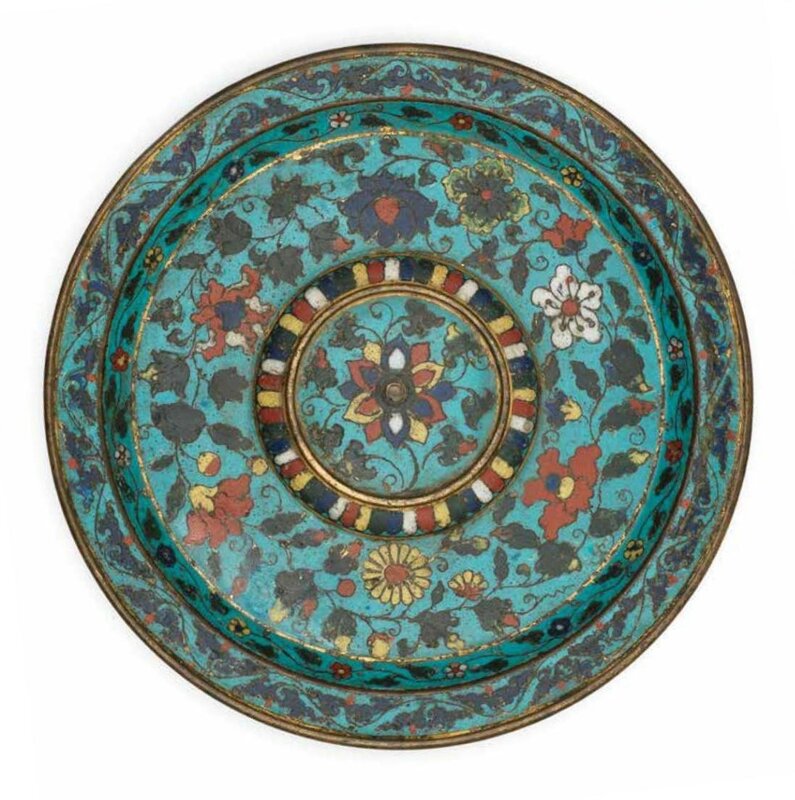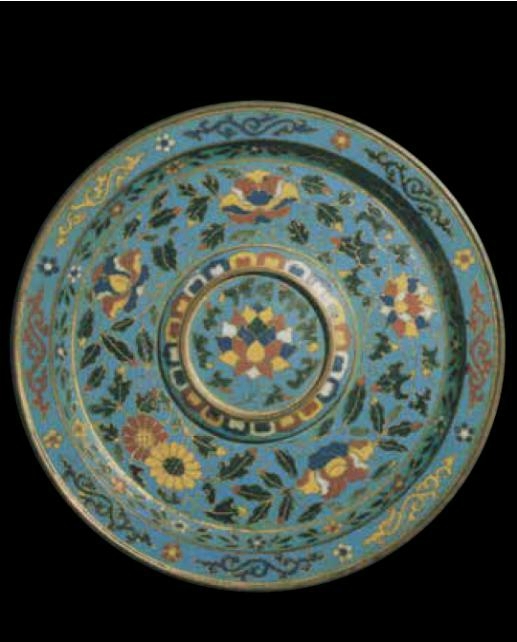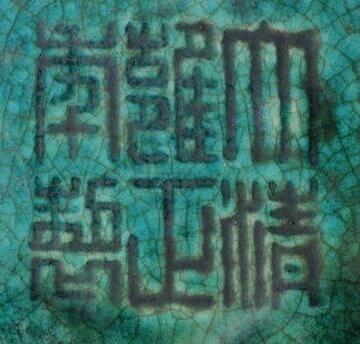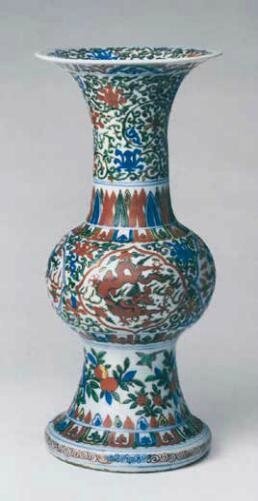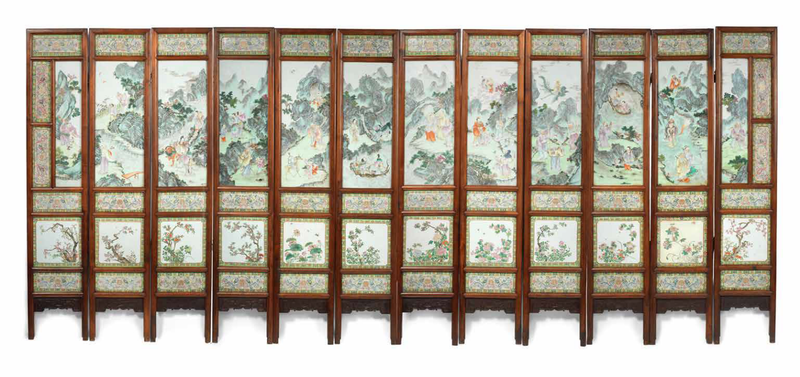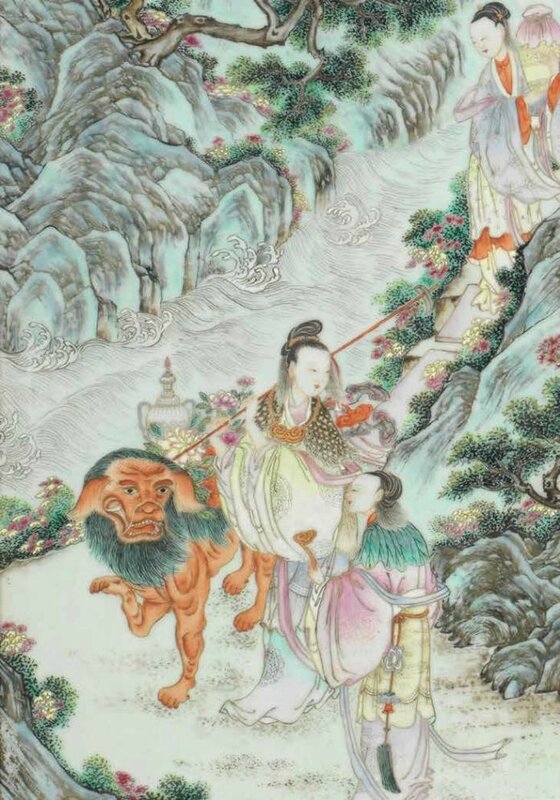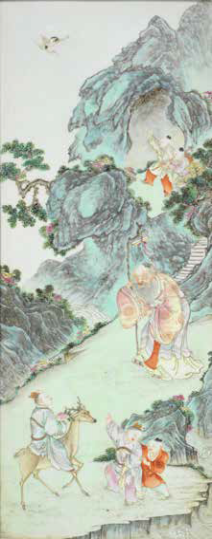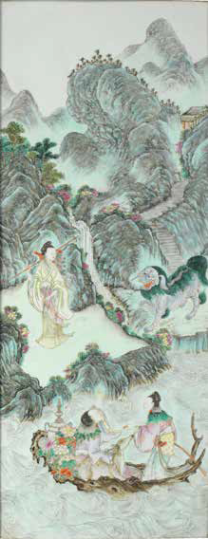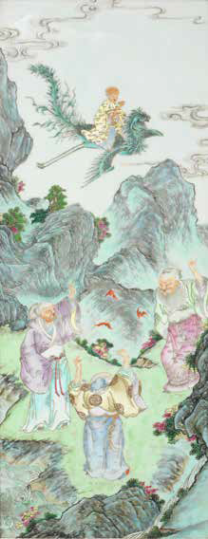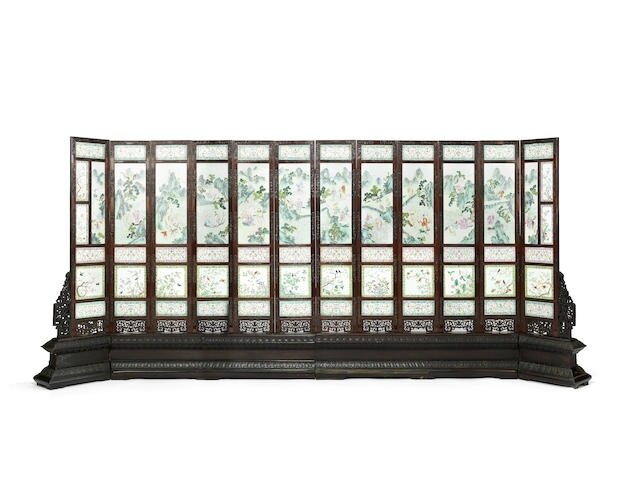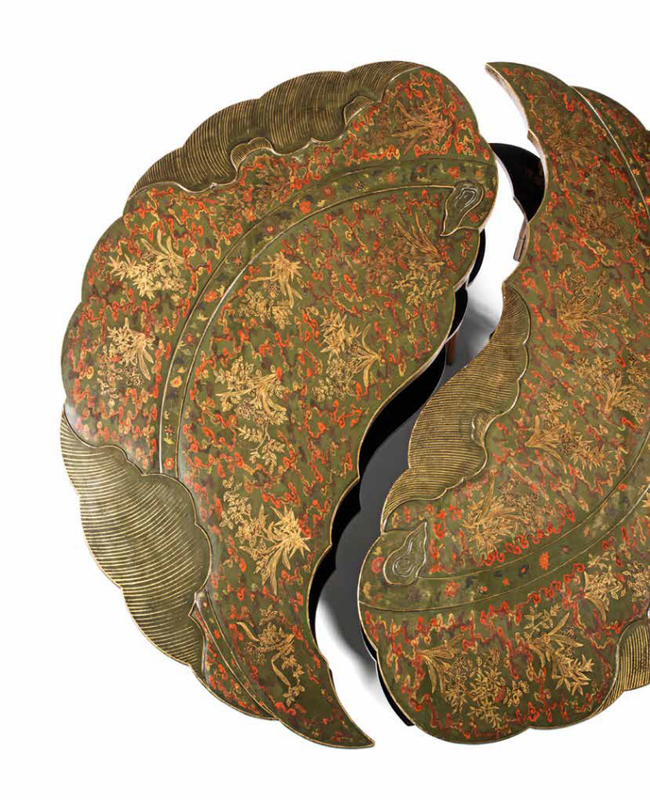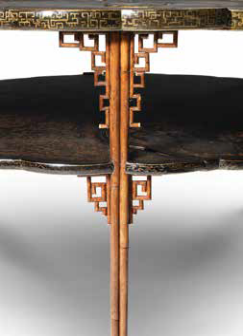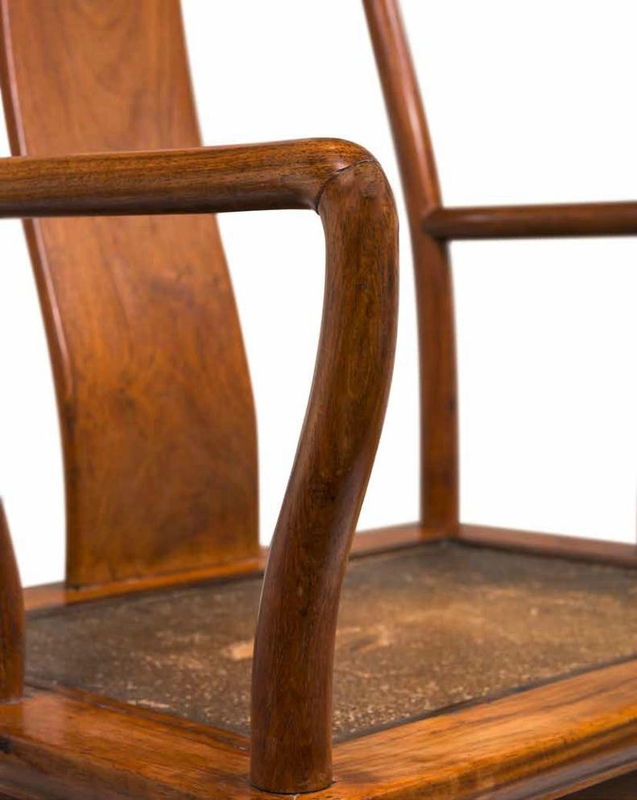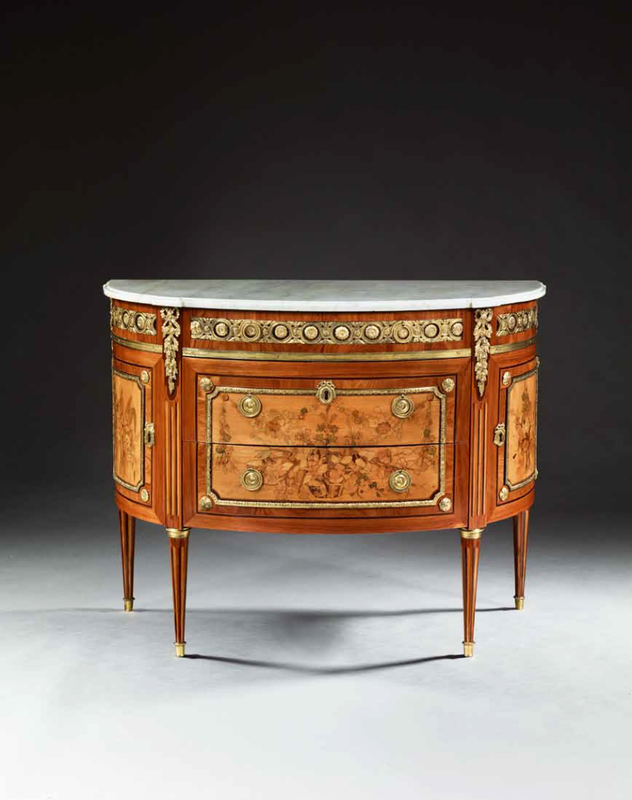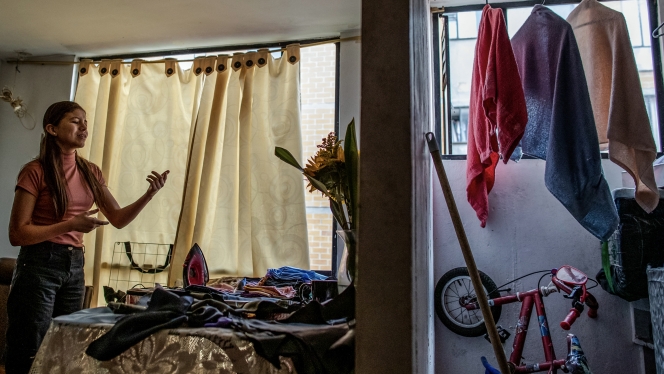![artcurial-2]()
Lot 57. A marble bust of Venus dating from the 1st and 2nd century AD. Estimate of €300,000– 400,000 / $330,000 – 440,000. Photo Artcurial.
PARIS.- On 16th May 2017, Artcurial will hold its first sale of the year dedicated to Furniture and Works of Art. Comprising more than 300 jewellery, furniture, sculpture and tapestry lots, the sale will create an overview of 14th to 19th century Decorative Arts, alongside an exceptional antiquity: a marble bust of Venus dating from the 1st and 2nd century AD. Sculpted during the Roman era from a Greek model of the Hellenistic period, it belonged to the famous Parisian antiquarian dynasty, Bernheim-Jeune family. It carries an estimate of €300,000– 400,000 / $330,000 – 440,000.
The auction will commence with a section dedicated to scientific instruments, namely a Spanish 14th century astrolabe. This is the only example known, built by an Arab craftsman in a Christian city (estimate: €30,000 – 50,000 / $33,000 -55,000). This set will also include the Georges Baptiste collection (1920-1989), who was president of the Belgium Antiquarian Chambers and passionate about measuring instruments.
Furthermore, the section dedicated to Furniture and Art objects will present several pieces from the Baroque period, such as a Flemish tapestry from the end of the 16th century, depicting grotesque motifs and garden scenes, from the Mège collection, and a white marble sculpture by Filippo Parodi circa 1680 representing l’Enfant Jésus endormi (Sleeping Baby Jesus).
«This sculpture of Venus is of exceptional quality. The delicacy, the accuracy and the extreme sensitivity of the modelled anatomy are remarkable. It is a symbol of idealized Feminine Beauty. Of human size, it is comparable to the most celebrated models kept in museums. » - Isabelle Bresset, Director Furniture and Works of Art department, Artcurial.
The Bernheim-Jeune Antique Venus
The start of the auction will be dedicated to the dispersion of an antique sculpture of exceptional quality. Torse d’Aphrodite, du type de Tauride (lot 57) was photographed in 1925, in the salons of the private residence of the Bernheim-Jeune family, famous dynasty of Parisian art dealers. The white marble representing a bust of Venus is dated from the 1st and 2nd century AD. It was created in the Roman era, from a Greek model of the 4th-3rd BC Hellenistic period.
With an estimate of €300,000– 400,000/ 330,000 – $440,000, the sculpture represents the goddess Venus walking out of the water. A multifaceted female goddess, she simultaneously symbolises love and fertility but also war and death. She is represented here with her arms raised, revealing her sex, leaning on her right leg and slightly twisting to the left.
![1]()
![3]()
![2]()
Lot 57. A Roman marble torso, depicting an Aphrodite of the Tauride type, 1st-2nd century A.C., after an Hellenistic model from the 4th-3rd century B.C. Estimate of €300,000– 400,000 / $330,000 – 440,000. Photo Artcurial.
Marbre blanc à légères veinesgrises, probablement d’Italie ; léger repolissage postérieur sur le bas de la cuisse droite et comblement d’un trou sous le bras gauche Dimensions sans le socle : H. : 73 (28 ¾ in.), l. : 40 cm (15 ¾ in.). Présentée sur un socle pivotant en chêne
Provenance : Collection Bernheim-Jeune à Paris en 1924.
Collection privée, Paris.
Bibliographie comparative : S. F. Schröder, Catalogo de la escultura clasica del Museo del Prado, Madrid, 2004, fig. 123 et 154.
M. Moltesen, Imperial Rome II Statues NY Carlsberg Glyptotek, Copenhague, 2002, n° 3160 p. 66.
M. B. Comstock et C.C. Vermeule, Sculpture in stone, the Greek, Roman and Etruscan Collections of the Museum of Fine Arts Boston, Boston, 1976.
J. Marcade, Au musée de Delos, étude sur la sculpture hellénistique en ronde bosse découverte sur l’ile. B.E.F.A.R. 215, Paris, 1969, pl. XLV à XLVII.
Publication : G. Patrice, M. Dauberville, Renoir 1858-1881, Catalogue raisonné des tableaux, pastels, dessins et aquarelles, Edition Bernheim-Jeune, Paris, 2007, Vol. 1, p.3 (voir ci-dessous)
![4]()
Renoir, Catalogue raisonné des tableaux, pastels, dessins et aquarelles, Guy-Patrice et Michel Dauberville, Éditeur Bernheim-Jeune, Paris, 2007, pp.2-3. © D.R.
Note: Ce buste représente la déesse Vénus sortant de l’eau (modèle dit anadyomène). Elle était certainement représentée sous l’aspect impudique c’est-à-dire les bras levés laissant découvrir son sexe. Elle est en appui sur la jambe droite et en légère torsion vers la gauche. Le traitement anatomique est très fin et soucieux des détails afin d’approcher un certain réalisme et surtout rendre un sentiment de grâce et de sensualité.
Pour ces raisons esthétiques, cette statue rentre totalement dans la mouvance stylistique des productions de la période hellénistique. Au milieu du IVe siècle avant J.-C., à Cnide, fut placée par le sculpteur Praxitèle, une statue de Vénus nue qui deviendra l’archétype de
la représentation de la déesse Aphrodite. On retrouvera de nombreux modèles directement copiés ou librement interprétés dans les temples, les édifices publics et les riches villas. Ce thème assez érotique de la femme sortant du bain était un sujet plaisant et très décoratif. Il eut une fortune jusqu’à la fin de la période romaine. De nombreux artistes comme Lysippe ou Skopas, tous deux concurrents de Praxitèle, créèrent des modèles proches mais dont les corps sont fléchis différemment et l’appui de la jambe peut varier. À la différence de Praxitèle à qui on attribue la Vénus de Cnide, de Dresde et celle d’Arles, entre autres, ici le contrapposto (c’est à dire le déhanchement et le mouvement du corps qui le contrebalance), sont différents. Par cette position où la jambe d’appui est à droite et le bras légèrement levé aussi du même côté, on peut faire la corrélation avec l’Aphrodite de Tauride du musée de l’Hermitage à Saint Petersburg. Bien que particulièrement bien réussi par la finesse du rendu de l’anatomie, ce rare modèle n’a pas encore reçu d’attribution à un artiste antique connu.
On remarque à la base de la cuisse gauche un léger repolissage. On peut supposer qu’il existait à l’origine un élément colléà la statue (tel qu’un drapé ou une colonne) qui subsistait partiellement mais qui fut gommé postérieurement car inesthétique. L’exemple du musée de Copenhague, très poche par le style et les volumes, avait à son coté la figuration d’un tissu drapé.
Aphrodite (ou Venus) est la déesse féminine aux multiples facettes. D’origine très ancienne et en grande partie Orientale, elle règne non seulement sur l’Amour (Apostrophia, “qui fait oublier les amours malheureux”, Urania, “Amour céleste”, Hétaïra, protectrice des courtisanes, ymphia, “Déesse des mariages”, Pothon, “mère du désir”, etc) mais intervient aussi dans la guerre (Doliophron, “rusée”, Androphanos, la “Tueuse d’hommes”, Nikêphoros, “Qui donne la victoire”), et dans le domaine funéraire (Epithymbia, “Celle des funérailles”, Tymborychos, “qui creuse les tombes”).
La production de statuettes à son effigie débute tôt au IIe millénaire mais s’intensifie à la période classique et surtout hellénistique. Les grands modèles - plus grands que taille humaine - que l’on retrouve dans les musées et les grandes collections privées, comme celle que nous proposons à la vente, sont tous des copies romaines de modèles du IVe - IIe siècle av. J.-C.
Ses formes généreuses et sa plastique très féminine seront appréciées jusqu’à la période romaine, et resteront le canon féminin idéal de la Renaissance jusqu’au XIXe siècle.
Scientific instruments collection
This auction will present an important chapter dedicated to scientific instruments, including a 19th century Chinese gilded automaton clock, lot 45 (estimate: €30,000– 50,000/ $33,000 – 55,000). In the mid eighteenth century, a significant trade of high-end clocks is established between England and China. Dazzled by the productions of manufacturers such as James Cox, William Carpenter or Henry Borrel, Chinese mechanics, first in the imperial workshops and then in southern ports such as Canton, endeavoured to understand the maintenance and the manufacture of such parts. The manufactured clocks are all derived from the English models such as the one offered at auction. These clocks are often a mixture of parts imported from Europe and manufactured on site.
![5]()
![6]()
![8]()
Lot 45. A quarter striking table clock with carillon, signed ‘Coeng Sing Canton 粵東省 祥盛號’, with animated dials, first quarter of the 19th century. Estimate €30,000– 50,000/ $33,000 – 55,000. Photo Artcurial.
![7]()
En bronze ciselé et doré, verre et verres colorés, le cadran en émail blanc, chiffres romains pour les heures, arabes pour les quarts d'heures, aiguilles en laiton ajouré, trotteuse pour les secondes au centre en acier bleui, pièces de coin en verre clair, bleu et rouge, lunette sertie de verres rouge et blanc en alternance ; mouvement rectangulaire à deux corps de rouage, fusées, échappement à verge horizontal, court balancier simple avec poids en forme de poire, sonnerie des quarts sur deux timbres, carillon de huit timbres (démonté) actionné par un barillet picoté, platine arrière gravée de la signature en caractères chinois et latins, décor gravé sur les bords et le coq de suspension, mise à l'heure par bouton de réglage à ressort arrière ; caisse élaborée en trois niveaux : la base rectangulaire contenant le mouvement porté sur quatre pieds appliqués à la caisse en bronze doré ciselé en relief de fleurs et feuillages, au deuxième niveau quatre dragons portent l'étage supérieur duquel tombe une cascade simulée par des colonnes de verre torsadées tournant sur elles-mêmes ; au deuxième étage est placée à la verticale une rosette centrale entourée de dix rondeaux tournant ensemble pendant que la cascade tombe, cet ensemble est surmonté par une pièce en forme de vase incrusté des caractères 'Da ji' (bonne fortune) ; avec sa clé originale à tête ovale gravée d'une fleur centrale et un cercle de cercles circonférentiels à restaurer.
H. : 95 cm (37 1/2 in.) - L. : 37 cm (14 1/2 in.) - P. : 30 cm (11 3/4 in.)
Bibliographie comparative : Ian White, "English Clocks for the Eastern Markets…", 1580-1815, Ticehurst, 2012, ch. 8.
Catherine Pagani, "Eastern Magnificence & European Ingenuity : Clocks of Late Imperial China", Ann Arbor, 2001, 154-57.
Note: Au milieu du XVIIIe siècle, un commerce important d'horloges d'exception s'établit entre l'Angleterre et la Chine. Éblouis par les productions de fabricants comme James Cox, William Carpenter ou Henry Borrel, des mécaniciens chinois, d'abord dans les ateliers impériaux, puis dans les ports du sud comme Canton, oeuvraient pour comprendre l'entretien et la fabrication de telles pièces. Les horloges qu'ils fabriquent sont toutes dérivées des modèles anglais comme montre l'exemple ici présenté. Caisses très élaborées, cadrans en émail blanc à chiffres européens, lunettes ornées de pierres en verres de plusieurs couleurs, cascades, fleurs et figures à rotation, sont tous les éléments caractéristiques de cette production. Ces pendules présentent souvent un mélange de pièces importées d'Europe et fabriquées sur place. L'exemple présenté ici, d'une relative sobriété, signé par un fabricant à Canton peut être rangé dans la première génération de ces horloges chinoises basées sur les modèles anglais dont la production a été stimulée par la description qui en a été faite dans l'encyclopédie de Xu Chaojun, Gaohou Mengqiu (Dimensions de l'univers) de 1809.
Amongst the key elements at the auction, a 14th century astrolabe created in 1336 in Tudela, Spain, signed by Ahmad ibn Abu Adb Allah al-Qurtubi al-Yamani, lot 56 (estimate: €30,000– 50 000 / $33,000 – 55,000).
![11]()
![9]()
![10]()
Lot 56. A gilt-brass astrolabe, signed 'Ahmad ibn Abû'Abd Allâh al-Qurtûbî al-Yamani in Tuleda year 737 Hijra', 14th century. Estimate €30,000– 50 000 / $33,000 – 55,000. Photo Artcurial.
En laiton doréà l'exception de l'intérieur de la mère et le revers de l'araignée, écrit entièrement en coufique occidental et numéroté en abjad (alpha-numéreaux), le limbe de l'instrument fondu en une seule pièce avec le trône (kursî) et soudé au dos pour former la mère, le trône, très bas, percé de deux trous au centre et à quatre lobes de chaque côté, la mère est sans inscription
Sur la face :
- un graphique de tous les horizons d'Ibn Baso, utilisé pour résoudre les questions du temps du levé et couché du soleil et des étoiles et la durée du jour
- l'araignée marque la position de trente étoiles (quinze à l'intérieur et quinze à l'extérieur de l'écliptique), par des indexes droites ou légèrement courbées ; quatre petites caboches (mudir) permettent de tourner l'araignée, l'index du signe du Capricorne (al-murî) est rectangulaire avec une ligne indicatrice centrale, chaque signe du zodiaque est divisé en 6° sur le rebord biseauté du cercle écliptique ; la barre droite est-ouest doublement rompue
Vingt-neuf étoiles sont nommées :
Cygni
Aquilae
Lyrae
Ophiuchi
Scorpionis
Serpentis
Coronae Borealis
Bootis
Ursae Maioris
Virginis
Corvi
Sagittarii
Leonis
Hydrae
Geminorum
Canis Minoris
Canis Maioris
Orionis
Orionis
Aurigae
Tauri
Persei
Ceti
Un tympan fixé sur la latitude de Qurtaba (38° 30') avec des lignes pour les prières de midi (al-zuhr) et de l'après-midi (al-'asr) et des lignes pour les heures inégales (1 à 12)
Le dos gravé des échelles suivantes :
- une échelle de degrés en quadrants de 90° divisés et numérotés par groupes de 6°, la lecture inversée de quadrant en quadrant
- un calendrier zodiacal julien excentrique (0° Aries = 15 mars)
- les seigneurs et les largeurs des termes représentant les planètes qui contrôlent une partie d'un signe du zodiaque et sa largeur
Au centre, un carréà ombres doubles
et la signature
Manquent l'alidade, l'étrier et l'anneau de suspension
D. : 9,3 cm (3 1/2 in.)
Bibliographie : David A. King, The Quatrefoil as decoration on astrolabe retes', in In Synchrony with the Heavens : Studies in astronomical Timekeeping and Instrumentation in Medieval Islamic Civilisation, ii Instruments of mass Calculation, Leiden & Boston 2005,
part XVII.
David Pingree, Eastern Astrolabes (Historic Instruments in the Adler Planetarium & Astronomy Museum, vol II), Chicago 2009, N° 10, pp. 38-41.
Note: Inconnu dans toute la littérature de l'astrolabe, l'instrument présenté ici est du plus grand intérêt artistique et historique : il s'agit du seul astrolabe actuellement connu fabriqué par un artiste musulman dans une ville chrétienne. Tudela (latitude 43° 3'), a fait partie de l'Andalousie musulmane de 802 à 1119 ; en 1119, la ville fut prise par le roi chrétien, Alfonso I d'Aragon. La ville est alors divisée en trois quartiers - chrétien, musulman et juif - chacun gardant ses propres systèmes juridiques et rituels. C'est ainsi qu'Ahmad ibn Abû'Abd Allâh al-Qurtûbî al-Yamani put fabriquer des astrolabes arabes sous un régime chrétien.
Cet astrolabe est à la fois traditionnel et original : l'al-Andalus semble indiqué par la valeur du 15 mars (aberrant pour l'époque), pour marquer le début d'Aries, alors que les symboles utilisés pour les seigneurs des termes semblent dérivés de l'est de l'Islam, d'Iraq ou de la Syrie, comme c'est le cas sur un astrolabe de Badr ibn 'Abdallah de 525 de l'hégire (1130/31). Néanmoins, l'instrument est doté d'un tympan relativement récent, le 'tympan de tous les horizons' d'Abû'Alî al-Husayn ibn Baso (m. 716/1316), et d'une araignée assez originale avec deux barres droites à la position normalement occupée par un arc de l'équateur. Il est également doté d'une décoration de cercles lobés, ouverts ou fermés, qui s'alignent avec un décor de trèfles et quatrefeuilles utilisé sur plusieurs astrolabes des pays de l'est et l'ouest des terres d'Islam du Xe au XVIIe siècles, comme sur l'astrolabe de Badr déjà cité, ainsi que sur les astrolabes de l'Occident chrétien du Moyen Âge et même après.
Le motif de quatrefeuille, qui trouve probablement son origine dans l'art byzantin, fut spécialement prisé durant l'ère hispano-mauresque. Notre astrolabe offre un témoignage important de l'engouement pour ce motif et son développement. Son araignée est décorée d'enlobements de trois et six demi-cercles sans parallèle sur les instruments d'Andalousie et du Maghreb. Ils peuvent, cependant, être confrontés au décor d'un astrolabe Catalan vers 1300 (IC N° 162) et d'autres astrolabes latins. Ainsi notre astrolabe semble se situer au carrefour de la transmission des éléments décoratifs entre l'Islam et l'Occident Chrétien.
D'Ahmad ibn Abû'Abd Allâh al-Qurtûbî al-Yamani rien n'est connu.
Closing this chapter, 10 pieces from the Georges Baptiste collection (1920-1989), a Belgium antiquarian of great renown, and president of the Belgium Antiquarian Chamber. Passionate about instruments of measure, his name remains linked with the 1984 Brussels exhibition La Mesure du Temps dans les collections belges.
A selection of 5 Baroque and classical works
Belgium will also be honoured with a Flemish wool tapestry from the end of the 16th century, made in the Brussel workshops. (lot 143). It is composed of grotesque motifs and mythological scenes including humans and animals. (estimate: €40,000– 60,000 / $44,000 – 66,000). Several centres in the Flanders produced grotesque tapestries, such as Brussels, Bruges or Anvers. These were part of the Charles Mège collection.
![12]()
![14]()
Lot 143. A Brussels Grotesque tapestry, late 16th-early 17th century. Estimate €40,000– 60,000 / $44,000 – 66,000. Photo Artcurial.
En laine, à décor de grotesques sur un fond cramoisi, le décor rythmé par trois portiques, deux personnages élevés sur un piédestal, l'homme tenant un glaive, la femme une croix, de part et d'autre d'une arche surmontée d'une treille et laissant apercevoir un paysage de verdure animé d'un homme tentant de dompter un cerf, parmi des vases fleuris, putti, animaux, draperies et trophées ; les bordures manquantes
Dimensions : 260 x 445 cm (102 1/4 x 175 1/4 in.)
Publications : Gaston Migeon, Les Arts, revue mensuelle des Musées, Collections, Expositions, "collection de M. Ch. Mège", n°86, février 1909, pp. 2-19.
Expositions : Exposition d'art rétrospectif au Palais du Trocadéro, 1889
Bibliographie comparative : Guy Delmarcel, La Tapisserie Flamande, Paris, 1999
La Revue du Louvre et des Musées de France, n°3, 1961, pp. 97-116.
Note: Cette tapisserie combine des motifs de grotesques d'inspiration italienne et les décors de verdures ou de jardins à pergola dans lesquels se déroulent des scènes mythologiques créées à Bruxelles aux XVIe et XVIIe siècles.
La mode des grotesques se répandit à la suite de la découverte vers 1480 du Daumus Aurea de l'empereur Neron. De nombreux artistes descendirent dans les " grottes " abritant le palais de Neron et purent admirer ses décors foisonnant de fantaisie, de lyrisme, leur liberté de construction et de formes ne correspondant à aucun mode d'ornementation connu jusqu'alors, nourrissant alors ainsi leur imagination. Raphael (1483-1520) s'en inspira pour les logge du Vatican tandis que ses disciples tels que Perino del Vaga (1501-1547) ou Giulio Romano (1499-1546), les diffusèrent, notamment dans le domaine de la tapisserie en fournissant des modèles aux ateliers bruxellois. Ainsi Giulio Romano créa une tenture des Douze mois Grotesques dont un exemple tissé par Cornelis de Ronde (d. 1569) est conservéà Vienne (L. Baldass, Die Wiener Gobelinssammlung, Vienna, 1920, vol. I, cat. 126). Cette tenture servit encore plus d'un siècle plus tard de modèle à la manufacture des Gobelins quand celle-ci la copia en 1686-87 pour le Trianon.
Le thème des grotesques apparut tout d'abord sur les bordures de tapisserie et prit rapidement place dans le décor principal. Plusieurs centres en Flandres produisirent des tapisseries à grotesques, tels que Bruxelles, Bruges ou Anvers.
Les exemples connus exécutés par les ateliers de Bruges dans la seconde moitié du XVIe siècle reprennent le principe de décor rythmé de portiques et de grotesques de part et d'autre d'une scène centrale. Nous pouvons citer la tapisserie conservée au Musée des Beaux Arts de Besançon(1), une tapisserie passée en vente chez Christie's en 1990(2) ou encore une autre vendue à Drouot en 1996(3). Toutes trois sont ornées d'une bordure à motif de vases de fleurs et fruits et rinceaux de végétaux animés d'animaux et grotesques.
Notre tapisserie fit partie de la collection Charles Mège. Elle est reproduite dans un article de la revue Les Arts en 1909(4). Elle y est alors dite italienne, datée du début du XVIIIe siècle, et est munie de ses bordures aujourd'hui manquantes. Elles représentent les quatre éléments et furent créées pour Philippe II d'Espagne pour une tenture de la Vie de Noéà partir de 1563. Ces fameuses bordures " zoologiques ", les animaux symbolisant les éléments, seront utilisées pendant un demi-siècle.
Elles sont dues au peintre Michel Coxcie (1499-1592) qui après un apprentissage auprès de Bernard Van Orley (vers 1488-1541) séjourna longuement en Italie où il est mentionné par Vasari. Peintre de patrons et de cartons, il quitta Malines en 1543 pour s'installer à Bruxelles où il résida jusqu'en 1577. Son style imprégné d'art italien lui valut le surnom de " Raphael flamand ".
Plusieurs tisserands bruxellois vinrent s'installer à Anvers dans la deuxième moitié du XVIe siècle. Ce fut le cas de Josse van Herzelle à qui l'on doit les Grotesques aux scènes bibliques, ornées des mêmes bordures, datées vers 1585, dont une pièce est conservée au Rijskmuseum à Amsterdam(5).
Collection Charles Mège
Saluée par Gaston Migeon dans un article de la revue Les Arts en 1909(4), la collection de Charles Mège fut jugée suffisamment importante par les amateurs pour être exposée en 1889 à l'Exposition d'art rétrospectif au Palais du Trocadero : elle se présente ici à peu près en son entier, et prouve que, sans nulle défaillance, le choix a été fait avec une sureté de goût, une intelligence, un sentiment du caractère et de la beauté des choses tout à fait rares […] résultat des flâneries dans les bons coins de Paris, des voyages en Allemagne il y a trente ans, soit dans les années 1870-80. Composée de quelques tableaux, mais essentiellement de sculptures des écoles italiennes, allemandes, flamandes et françaises du Moyen Age et de la Renaissance, elle comporte également plusieurs très beaux exemples de tapisserie des XVe et XVIe siècles dont fait partie la nôtre, mais pas seulement.
En effet, la donation que fit
Melle Elisabeth Mège au Louvre en 1958 illustre son éclectisme, venant enrichir non seulement les collections de peintures et de sculptures mais aussi les départements d'art égyptien, des antiquités grecques et romaines, des objets d'art et des dessins.
C'est ainsi que, par exemple, le célèbre groupe en ivoire représentant l'arrestation du Christ, vers 1320-1330, entrât dans les collections nationales. Plusieurs musées à l'étranger possèdent des œuvres provenant de la collection Mège, tels que le Metropolitan Museum ou le Detroit Institute of art.
1. Illustrée dans Guy Delmarcel, La Tapisserie Flamande, Paris, 1999, p. 182
2. Christie's New York, le 1er novembre 1990, lot 214
3. Vente à Paris, Hôtel Drouot, Million Robert, le 6 décembre 1996
4. Gaston Migeon, Les Arts, revue mensuelle des Musées, Collections, Expositions, collection de M. Ch. Mège, n°86 février, 1909, p 19.
5. Illustrée dans Guy Delmarcel, La Tapisserie Flamande, Paris, 1999, p. 177
Filippo Parodi’s sculpture, Enfant Jésus endormi, dating from around 1680 (lot 158), is a major work by the celebrated 17th century Genoese artiste, formed in Bernini’s studio. In white marble, it remained out of the spectrum of art historians for a long period of time. All the virtuosity of his art is expressed in this rough-edged, imposing bloc of marble, representing his personal vision of the Nativity, (estimate: €180,000– 220,000/ $198,000 – 242,000) which is reminisce of a sleeping cupid iconography. While the influences of Bernini and Puget are present, the particular writing and Parodi’s maestri legitimize the considerable place occupied by the Genoese artist at the turn of the seventeenth and eighteenth century, in the dissemination of Roman baroque in Liguria.
![15]()
![16]()
Lot 158. A white marble group depicting a sleeping Jesus, by Giacomo Filippo Parodi (1630-1702), circa 1680. Estimate €180,000– 220,000/ $198,000 – 242,000. Photo Artcurial.
Marbre blanc. Signé" J.F. Parodi " sur le devant ; à l'avant sur le drapé : un petit éclat et une fissure, liée à un défaut du marbre. H. : 102 cm (40 in.) - l. : 42 cm (16 1/2 in.) -P. : 63 cm (24 3/4 in.)
Provenance : Famille Durazzo, Gênes ;
Marquis Gerolamo-Serra (1837) ;
Achat en 1844 par le Vicomte Hippolyte Vilain XIIII, ambassadeur de Belgique à Rome ;
Collection particulière belge ;
Par descendance jusqu'au propriétaire actuel.
Expositions : Exposition de tableaux et d'objets d'art et de haute curiosité ouverte au profit des pauvres, tenue au Palais du Duc de Brabant à Bruxelles, 1855.
Bibliographie : Carlo Giuseppe Ratti, Vite dè pittori, scultori e architetti genovesi, Gênes, 1769, II, p.58.
Société Saint Vincent de Paul, Exposition de tableaux et d'objets d'art et de haute curiosité ouverte au profit des pauvres, Palais du Duc de Brabant, Bruxelles, 1855, seconde partie Objets d'art, numéro 118, p.20.
Paola Rotondi Briasco , Filippo Parodi, 1962, Università di Genova, Gênes, p.103.
Luca Leoncini, Da Tintoretto a Rubens. Capolavori della Collezione Durazzo, catalogue de l'exposition tenue à Gênes au Palazzo Reale du 14 juilllet au 3 octobre 2004, Skira, Notice 53 par Carlo Milano, p.310-311.
Bibliographie comparative : Ezia Gavazza, Documenti per Filippo Parodi. L'altare del Camine e la specchiera Brignole, in Arte Lombarda. Nuova Serie. 58/59. 1981, pp.29-37.
Lauro Magnani, Un'esperienza contraddittoria, la prima produzione scultorea del Parodi, La scultura a Genova e in Liguria, vol.II, Genoa, 1988, pp.143-9.
Lauro Magnani, La Scultura delle forme della tradizione alla libertà dello spazio barocco, Sous dir. Ezia Gavazza, Genova nell'étà Barocca, Genova, Galleria nazionale di Palazzo Spinola, Galleria del Palazzo Reale, 2 mai-26 juillet 1992, Nuova Alfa Editoriale, 1992, pp.291-302.
Ezia Gavazza, Geneviève Bresc-Bautier, Pierre Puget (Marsiglia 1620-1694), un artista francese e la cultura barocca a Genova, catalogue de l'exposition tenue à Marseille, Centre de la Vieille Charité (30 octobre 1994-30 janvier 1995) et Palazzo Ducale de Gênes, 4 mars-4 juin 1995, Electa 1995, pp.52-61.
Cristiano Giometti Accenti di barocco maturo nell'Ecce Homo già in Santa Chiara Una proposta per Filippo Parodi, in F. Leverotti, a cura di, I tesori di Santa Chiara, Pisa 2012, pp.129-136.
-Davide Gambino and Lorenzo Principi, Filippo Parodi 1630-1702 Genoa's Bernini. A bust of Vitelllius., Baccarelli & Botticelli , 2016.
Note: Cette sculpture, non localisée pendant plus d'un siècle et demi par la sphère scientifique, est une œuvre majeure du célèbre artiste génois du
XVIIe siècle, Filippo Parodi(1). Fils de charpentier, il apprit à maîtriser toute la haute technicité du travail du marbre lors de deux séjours à Rome de 1661 à 1667, puis au début des années 1670. Il y fut, d'après des sources anciennes non attestées, formé dans l'atelier de Gian-Lorenzo Bernini (1598-1680) ou du moins dans celui d'Ercole Ferrata (1610-1686)(2). Il fut également fortement influencé par le génie du sculpteur Pierre Puget (1620 -1694) . L'artiste français séjourna en effet à Gênes de 1661 à 1668 et Parodi eût l'occasion d'observer son travail lors de nombreuses commandes communes.
Toute la virtuosité de son art se déploie dans cet imposant bloc de marbre aux contours irréguliers représentant une vision personnelle de la Nativité. Si les influences du Bernin(3) et de Puget sont bien présentes, l'écriture particulière et la maestria de Parodi légitiment à travers ce chef-d'œuvre la place considérable qu'occupa l'artiste génois au tournant des XVIIe et XVIIIe siècle dans la diffusion du baroque romain en Ligurie.
En reprenant dans sa composition l'archétype antique du Cupidon endormi, l'artiste présente l'Enfant Jésus allongé sur un vaste drapé dont les plis à la fois amples et anguleux synthétisent les influences du maître du baroque romain et les particularismes du style de Puget. Sous ce drapé enveloppant, voluptueux et protecteur, quelques épis de blé et brins de paille s'échappent et viennent avec pudeur évoquer la précarité de la crèche de Bethléem. Parodi réinterprète ici le thème de l'Enfant endormi, thème cher à la tradition picturale locale, ainsi que le dépeignent les peintres Giovanni Benedetto Castiglione (1609-1664) ou Valerio Castello (1624-1659). Alors que cette scène est sans doute une préfiguration de la Passion, il y évacue toute idée de morbidité : dans une attitude de confiance absolue - bras écartés, mains ouvertes, une paume tournée vers le ciel - l'enfant Jésus, nous est présenté abandonné dans un sommeil profond et apaisé. Les chairs potelées du nourrisson sont représentées avec une tendresse sincère et un naturalisme discret, le petit corps endormi se confondant et semblant naître des plis du drapé. Le calme de l'expression de son visage - dont les lèvres très ourlées et le nez légèrement retroussé sont une constante dans l'œuvre de Parodi - illustre avec justesse et dévotion l'idée de la béatitude. Le bras gauche et les deux jambes s'alignent dans un beau parallélisme, qui contraste avec la position du bras droit. Ce dernier, plié, semble pendre lourdement, accentuant le sentiment d'abandon de l'Enfant Roi, serein dans l'impénétrable léthargie du sommeil du juste. Au-delà du terrible épisode de sa Passion, le nimbe qui couronne sa petite tête de poupon prédit déjà sa victorieuse résurrection.
Cette thématique de l'humanisation du Christ dans un contexte plus global de Préfiguration de la Passion, ainsi que la composition générale et le rendu obtenu, font écho à un petit groupe d'œuvres que l'artiste réalisa au début des années 1680. Il s'agit, comme le rappelle l'auteur Carlo Milano, des quatre sculptures du Christ mort réalisées respectivement, pour l'église San Luca di Genova et des Carmélites de Santa Teresa di Savona - toutes deux réalisées en bois polychromé - et des deux marbres, l'un exécuté pour l'hôpital de San Carlo Voltri, et l'autre, pour la basilique de Santa Giustina à Padoue.
A l'instar du Cristo morto qui fut commandé vers 1680-1681 par l'un des membres de la puissante famille Spinola, cette œuvre fut probablement exécutée à la demande d'une autre famille dirigeante de la République génoise, la famille Durazzo(4). C'est en tout cas dans la plus importante de ses résidences, le Palazzo Reale, ancien palais Balbi racheté par Eugenio Durazzo (1630-1705) en 1677, au faîte de la puissance de cette famille, que l'œuvre est attestée en 1767(5). Il est probable qu'Eugenio Durazzo, qui avait fait appel à Parodi en même temps que l'architecte Carlo Fontana (1638-1714) pour transformer le palais selon la mode romaine, lui ait commandé cette œuvre(6). Pour une autre sculpture de l'artiste, représentant un Christ à la colonne, dimensions 90 x 43 x 22 cm, conservé au Palazzo Reale de Gênes) et attestée en 1677 dans la chapelle privée du palais, il est généralement admis qu'elle a été commandée vers 1677 -1680 par Eugenio ou son épouse(7).
Après avoir été conservé jusqu'au début du XIXe siècle dans la famille Durazzo, l'Enfant Jésus endormi passa dans les mains de la famille Serra, sans doute grâce à un jeu d'alliances matrimoniales(8). Il fut en effet conservé dans les collections du marquis Gerolamo-Serra (1761-1837), grand homme politique défenseur de l'indépendance de Gênes et auteur d'une volumineuse histoire de la Ville-Etat publiée en 1834. Après sa mort en 1837, l'œuvre fut vendue par ses descendants puis rachetée en 1844 par le grand amateur d'art belge, le vicomte Charles Hippolyte Vilain XIIII (1796-1873). Ce diplomate et membre du congrès national, longtemps en poste, en tant qu'ambassadeur, en Italie, offrit la possibilité au public de découvrir cette sculpture remarquable lors d'une exposition tenue à Bruxelles en 1855. La localisation de l'œuvre semble ensuite avoir été perdue jusqu'en 2004, date à laquelle l'historien d'art Carlo Milano l'a présenté dans le catalogue de l'exposition sur la Collection Durazzo au Palazzo Reale(9).
L'Enfant Jésus endormi pose un jalon des plus importants dans la carrière de Parodi. Sa datation, autour des années 1680 marque une véritable transition entre une production encore pétrie des influences des grands maîtres baroques, et un style propre, fougueux et plus indépendant.
1. Voir la notice de l'historien d'Art Carlo Milano à qui l'on doit la redécouverte de cette œuvre et son exposition lors de l'exposition Da Tintoretto a Rubens. Capolavori della Collezione Durazzo, tenue à Gênes au Palazzo Reale du 14 juillet au 3 octobre 2004. L'auteur de la première monographie de l'artiste, Paola Rotondi Briasco l'indiquait comme perdu en 1962.
2. Voir article de Cristiano Giometti, p.130.
3. Les spécialistes de Parodi, Cristiano Giometti et Lauro Magnani s'accordent pour voir dans les deux anges sculptés par le Bernin en 1669, désormais conservés dans l'église Sant'Andrea delle Fratte, des sujets d'inspiration de grande importance dans l'œuvre de Parodi : on retrouve ainsi cette inspiration dans le traitement des chevelures aux boucles en spirales profondément travaillées, entourant des visages inclinés aux lèvres sensuelles légèrement entrouvertes et exprimant une indolence manifeste.
4. Cf. Cristiano Giometti, op cit et Giovanni Assereto , I "Durazzo di Palazzo Reale". Breve storia di una grande famiglia Patrizia dans le catalogue de l'exposition de 2004.
5. Carlo Giuseppe Ratti, Vite dè pittori, scultori ed architetti genovesi, Gênes, 1769, II , p.58 : "In questo Palazzo dell' Eccellentissimo Marcello Durazzo del fu Gio Luca sono del Parodi alcuni preziosi marmi. In un salotto del prefato Sig. Durazzo v'ha un bambino, che dorme".
6. Aucun document n'atteste de cette commande à Parodi. Pour rappel, Eugenio commanda un ensemble de quatre sculptures représentant les figures mythologiques Vénus, Clytie, Adonis et Hyacinthe.
7. Filippo Parodi.Cristo alla colonna. Notice 56, p.232, in Pierre Puget. Un artista francese e la cultura barocca a Genova.
8. Il est à noter que le superbe marbre de Vitellius, tout récemment réattribuéà Parodi, était également passé, par voie d'alliance, aux mains d'un membre d'une autre branche de la famille Serra. Cf Davide Gambino et Lorenzo Principi, Filippo Parodi. 1630-1702. Genoa's Bernini. A bust of Vitellius, Bacarelli & Botticelli, 2016.
9. Luca Leoncini, Da Tintoretto a Rubens. Capolavori della Collezione Durazzo, catalogue de l'exposition tenue à Gênes au Palazzo Reale du 14 juilllet au 3 octobre 2004, Skira, Notice 53 par Carlo Milano, p.310-311.
Another remarkable piece at the auction, attributed to Nicolas Sageot, is a Louis XIV dresser in tortoise shell, brass and tinted horn inlay, lot 145 (estimate: €70,000– 100,000 / $77,000 – 110 000).
![17]()
![18 (2)]()
Lot 145. A Louis XIV ormolu-mounted, Boulle marquetry commode, attributed to Nicolas Sageot, circa 1710-1715. Estimate €70,000– 100,000 / $77,000 – 110 000. Photo Artcurial.
En marqueterie en première partie de laiton, incrustations de corne polychrome et de nacre sur fond d'écaille brune, cuivre et bronze doré, le dessus de marbre brèche violette mouluré en bec de corbin, de forme bombée et ouvrant en façade par deux petits tiroirs à la partie supérieure et par deux autres grands tiroirs, disposés en trois rangs à traverses, les montants arrondis, le décor composé de doubles volutes à rinceaux supportant un vase, disposé symétriquement sur les tiroirs face à un petit panneau médian d'aspect carré, de bandes sur les montants, à riches cartels à fleurons, volutes et médaillons polylobés ornés d'un motif réticuléà losanges ponctués de rosaces quadrilobées en laiton sur fond de nacre, enfin, de deux panneaux sur les côtés ornés de cartels renfermant une ample rosace de palmettes et rinceaux d'acanthe, le tout entouré de rinceaux à feuilles et fleurs également d'acanthe, les tiroirs ainsi que les montants et les côtés de la commode sont ceints de bandes de cuivre guilloché, les mains à poignées torsadées et supports en rosace, les entrées de serrure à masque de Pomone posé sur un cartel à volutes et chutes à fleurons, les pieds à doubles volutes en console disposées de part et d'autre d'une palmette surmontant une réserve réticulée. H. : 83 cm (32 1/2 in.) l. : 129 cm (50 1/2 in.) P. : 65 cm (25 1/2 in.)
Note: Selon Pierre Grand, notre meuble appartient à un groupe de commodes très similaires, caractérisées par leur façade bombée, par les trois rangs de tiroirs et par les montants arrondis. Les différences sont constituées par leurs plateaux, soit marquetés, soit recouverts d'une dalle de marbre, par l'aspect des décors sur les panneaux latéraux, par la présence ou l'absence d'un tablier en ceinture, et enfin, par de petites variations dans leurs parures en bronze(1).
Ce modèle décliné soit avec un revêtement en marqueterie de cuivre et d'écaille, soit recouvert en bois de placage, fut attribuéà tour de rôle à Aubertin Gaudron et à Noël Gérard. La première attribution est àécarter.
Une commode vendue par Christie's en 1997(2), portant une estampille AG, vraisemblablement celle d'un marchand de bois ou d'un menuisier, fut attribuée à Aubertin Gaudron comme une seconde, sur laquelle on a cru voir la même marque dans une estampille AC renfermée dans un médaillon ovale, en réalité celle de l'ancienne collection Albin Chalandon(3). Il faut cependant écarter d'emblée l'attribution de ces meubles à Aubertin Gaudron, lequel décéda en 1684(4), moment où la commode comme pièce de mobilier n'avait pas encore été inventée.
L'attribution à Noël Gérard repose, quant à elle, sur la présence de son estampille abréviative NG, identifiée par Alexandre Pradère(5), sur une commode du même type recouverte en placage de bois de rapport, autrefois dans la collection de Madame Camoin(6). L'analyse de quelques unes des commodes de ce modèle conservées permet d'affiner encore cette seconde attribution, l'orientant plutôt vers un rattachement à l'œuvre de Nicolas Sageot qu'à celle de Noël Gérard. L'une d'entre elles, aussi en première partie mais sur un fond d'écaille teintée en rouge, vendue par Sotheby's à Londres(7), est en tout identique. Comme notre commode, elle ne présente pas de tablier et est coiffée d'une dalle de marbre. Une seconde, également sans traverse mais avec les montants d'un modèle différent, est passée en vente à Paris(8). La commode de Sotheby's, ainsi que quatre autres, dont trois en contrepartie(9), et une en première partie, provenant de Clumber Park(10), munies de tabliers, sont décorées sur les côtés de panneaux marquetés identiques à ceux de notre commode. Or, la commode de Clumber Park porte l'estampille de Nicolas Sageot. Par ailleurs, sur l'une des autres commodes, passée pour la première fois chez Christie's à Monaco en 1992, le plateau marqueté est orné en son milieu d'un médaillon ovale représentant une scène avec Bacchus, Pan, Apollon et un roi assis, dans un paysage arboré et architecturé, au bord d'un bassin oùévoluent deux cygnes. Ce thème iconographique, repris sur une seconde commode(11), ainsi que d'autres motifs, tels que ceux de la Naissance de Vénus(12), d'Hercule combattant l'Hydre(13), du Triomphe de Pallas ou de l'Amour(14), de scènes de chasse(15), etc., de même que les grandes compositions à panneaux décorés d'un danseur à la Berain, sur les côtés d'une commode du même modèle de la Résidence d'Ansbach(16), sont communs à plusieurs meubles à revêtement en marqueterie de cuivre et d'écaille, portant l'estampille ou attribués à Nicolas Sageot.
Nicolas Sageot
En effet, dans un état des marchandises de Sageot, joint à la vente que celui-ci avait conclue le 26 juillet 1720 en faveur de Léonard Prieur, marchand joaillier suivant la cour, sont mentionnées hormis des armoires, bibliothèques et bureaux, dix commodes de quatre pieds [129,92 cm], dont quatre " sans dessus, aussi de marqueterie de cuivre et d'escaille et pareillement garnies de bronzes ", ces dernière estimées à 2 500 livres, également " quatre commodes de trois pieds huit pouces [119,10 cm] de long, aussi de marqueterie de cuivre et escaille et pareillement garnies de bronze " et de deux autres " corps de commodes " de la même dimension, enfin, une dernière, également marquetée dont les dimensions ne sont pas précisées, évaluée à 300 livres.
Il semble donc vraisemblable de penser que des commodes du modèle de la nôtre ont été fabriquées aussi par l'atelier de Nicolas Sageot. Leur revêtement marqueté répétitif, doit être mis en rapport avec la présence d'un même marqueteur, en l'occurrence Toussaint Devoye (†1753), comme l'a découvert Pierre Grand(17). Or, Devoye fournissait aussi en marqueteries un autre ébéniste, Pierre Moulin, qui avait épousé en 1712 la belle-sœur du marchand ébéniste Noël Gérard, avec lequel tous les deux entretenaient des relations de travail.
Rappelons qu'à son décès en 1736, Noël Gérard possédait l'un des plus importants commerces d'ébénisterie et d'objets de luxe de Paris, qu'il avait installé dans les années 1720, à l'enseigne du Magasin Général, dans l'ancien hôtel du collectionneur Jabach, rue neuve Saint-Merry. Pendant les dernières années de sa vie, il concentrait tout son effort sur son activité de marchand, ayant vraisemblablement réduit considérablement le travail d'ébéniste. Hormis quelques pièces, l'inventaire ne fait ainsi état ni d'autres meubles recouverts de cuivre et d'écaille, ni d'outils de marqueterie. Plusieurs commodes y sont inventoriées, mais elles sont toutes recouvertes en bois de placage ou en bois noirci. Cependant, rien n'empêche de penser que Gérard avait déjàécoulé par le biais de son commerce des commodes en marqueterie de cuivre et d'écaille, soit livrées par Sageot avant sa cessation d'activité en 1720, soit produites par Pierre Moulin, soit, enfin, exécutées dans son propre atelier et recouvertes de décors marquetés par Toussaint Devoye lui-même, que ce dernier produisait en nombre.
1. Pierre Grand, " Le mobilier Boulle et les ateliers de l'époque ", L'Estampille-l'Objet d'art, 266, février 1993, p. 48-70.
2. New York, 21 octobre 1997, n°31 ; une autre commode de la même famille, non estampillée, attribuée aussi à Aubertin Godron, Christie's, Londres, 11 juin 1998, n°40.
3. Vente, Paris, Me Tajan, 25 juin 1996, n°183, voir pour la discussion de cette commode et de la précédente C. Demetrescu, " Les Gaudron, ébénistes du temps de Louis XIV ", BSHAF, année 1999, Paris, 2000, p. 33, p. 34-35, fig. 1-3 et note 2, p. 52.
4. Arch. nat., Min. cent., CXVII, 123, inventaire après décès d'Aubertin Gaudron du 6 mars 1684.
5. Les ébénistes français de Louis XIV à la Révolution, Paris, Eds. du Chêne, 1989.
6. Vente, Paris, Drouot, 2 avril 1987, n°133.
7. 3 décembre 1997, n°79.
8. Vente, Paris, Me Ader, 11 juin 1965, n°80.
9. Christie's, Londres, 7 décembre 1989, n°74 ; Christie's, Monaco, 5 décembre 1992, n°50, puis Christie's, Monaco, 1er juillet 1995, n°212 et enfin, Christie's, Londres, 12 juin 1997, n°125 ; une troisième, Sotheby's, Zurich, 27 novembre 2000, n°341.
10. Christie's, Londres, 16 décembre 1999, n°50.
11. Vente, Cologne, Lempertz, 18 novembre 2016, n°994.
12. Christie's, Londres, 5 juillet 2013, n°46.
13. Christie's, Londres 11 juin 1998, n°40.
14. Sotheby's, Monaco, 24-25 juin 1984, n°3053 ; Sotheby's, New York, 21 mai 1992, n°69 ; Sotheby's, Londres, 6 juillet 2016, n°12.
15. Sotheby's, Londres, 13 juin 2001, n°253.
16. Reproduite par Christoph von Pfeil, Die Möbel der Residenz Ansbach, Munich, Londres, New York, Prestel, 1999, cat. 5, p. 63-67.
17. Pierre Grand, art. cit., p. 64 et suiv.
For the classic furniture, a Louis XVI half-moon dresser marked by Charles Topino (lot 252) with floral decor marquetry, symbolises the inventiveness of the craftsmen of the time, mingling naturalism and Neoclassicism (estimate: €40,000- 60,000 / $44,000 – 66,000).
![19]()
Lot 252. A Louis XVI gilt-bronze mounted, tulipwood, satinwood and floral marquetry commode, stamped Charles Topino. Estimate €40,000- 60,000 / $44,000 – 66,000. Photo Artcurial.
En placage de bois de rose, à décor de marqueterie florale sur fond de satiné, ornementation de bronze ciselé et doré, dessus de marbre blanc, la ceinture ornée de tournesols dans une frise d'entrelacs ouvrant par trois tiroirs, la façade ouvrant par deux tiroirs et deux vantaux, reposant sur des pieds fuselés à cannelures simulées, estampillée C.TOPINO et poinçon de jurande JME sur le montant avant droit ; le marbre restauré, une étiquette sur le desous inscrite "151 / commode / LXVI / Petit salon"; H. : 88 cm (34 1/2 in.) l. : 113 cm (44 1/2 in.) P. : 52 cm (20 1/2 in.)
Charles Topino, reçu maître en 1773
Provenance : Ancienne Collection Madame Christian Heidsieck Delepouille,
Vente à Paris, George V, le 21 juin 1989, lot 186. (FF 680. 000).
Bibliographie comparative : S.Barbier Sainte Marie, Charles Topino, Les Éditions de l'Amateur, Paris, 2005, p. 132, fig. 61.
P.Kjellberg, Le Mobilier Français du XVIIIe siècle, les Éditions de l'Amateur, p. 885.
Cette élégante commode demi-lune est typique de l'œuvre de Charles Topino à la fin des années 1770.
On y retrouve en effet plusieurs éléments caractéristiques de sa production à cette époque : la structure de la façade, la ceinture ornée d'une frise d'entrelacs en bronze, souvent centrés de tournesols,
enfin un décor alliant marqueterie florale et cannelures simulées sur les montants et pieds fuselés.
La pièce que nous présentons appartient à un corpus de commodes, dont une quinzaine d'exemplaires sont aujourd'hui répertoriés :
- Musée d'Art de Baltimore.
- Vente à Paris, Hôtel Drouot,
le 16 juin 2010, lot 398.
- Collection Garbisch, vente Christie's Paris, le 13 décembre 2006, lot 298 (Une paire).
- Ancienne collection Alice de Rothschild, puis Fred Stettenheim, puis vente Christie's New York, le 23 octobre 1998, lot 116 (Une paire).
- Ancienne collection Earls of Rosebery au Château de Mentmore, puis Sotheby's New York, le 22 mai 1997, lot 245
(Une paire).
- Collection Mlle Broadway, vente Christie's Londres, le 03 juillet 1986, lot 126. (Une paire ; une des deux commodes reproduite dans P. Kjellberg, Le Mobilier Français du XVIIIe siècle, les Éditions de l'Amateur, p. 885.)
- Collection Hillingdon, Christie's Londres, le 29 juillet 1972, lot 85.
- Collection Mortimer Schiff, vente Christie's Londres, le 22 juin 1938, lot 62 (Une paire).
- Collection Moise de Camondo, vente Christie's Londres, le 17 juin 1937.
An Empire wool carpet from the manufacture de la Savonnerie (lot 262) will also be offered for auction. Founded by Henri IV at the beginning of the 17th century, the Savonnerie produced carpets which were housed at the royal palaces or used as diplomatic gifts. A rarity on the market, they embody France’s grandeur (estimate: €40,000- 60,000 / $44,000 – 66,000).
![20]()
![21]()
Lot 262. An Empire Savonnerie wool carpet. Estimate €40,000- 60,000 / $44,000 – 66,000. Photo Artcurial.
En laine, à fond crème et vert, orné au centre d'une rosace feuillagée dans un entourage de guirlandes de fleurs nouées et rinceaux d'acanthe, la bordure ornée d'une guirlande de fleurs au naturel entre une double frise de feuilles de laurier ; petits accidents et déchirures. Dimensions : 645 cm x 590 cm (254 x 232 1/4 in.)
Note: La manufacture de la Savonnerie fut fondée par Henri IV qui, au début du XVIIe siècle, accorda à Pierre Dupont le privilège d'installer ses ateliers de tapis "façon du Levant et façon de Turquie", selon la technique du point noué, dans les galeries du Louvre. Très vite les tapis s'affranchirent du goût oriental pour incarner le classicisme à la française. Pendant près de deux siècles les tapis de la Savonnerie meublèrent exclusivement les palais royaux et servirent de cadeaux diplomatiques. En 1680, la commande de Louis XIV de quatre-vingt-dix tapis pour la grande Galerie du Louvre fut l'une des plus ambitieuses de son règne. Louis XV, tout comme Louis XIV, s'impliqua directement dans la création des tapis, déterminant leurs thèmes et leurs décors qui devaient caractériser la grandeur de la dynastie des Bourbons. Pierre-Josse Perrot (1700-1750) en fut l'artisan.
Interrompue pendant la Révolution, la production fut relancée par Napoléon Ier grâce à sa politique de remeublement des Palais impériaux, destinée à soutenir l'économie et la primauté culturelle de la France. Les décors emprunts de néoclassicisme suivirent l'esthétique promue par Percier et Fontaine dans leur Recueil de décorations intérieures (1801) dans un style toujours aussi majestueux.
Les tapis de la Savonnerie sont rares à apparaître sur le marché. Cependant, citons l'exemplaire provenant du grand salon de l'Hôtel de Bourrienne, vendu à Paris, Hôtel Drouot, le 12 octobre 2015.









